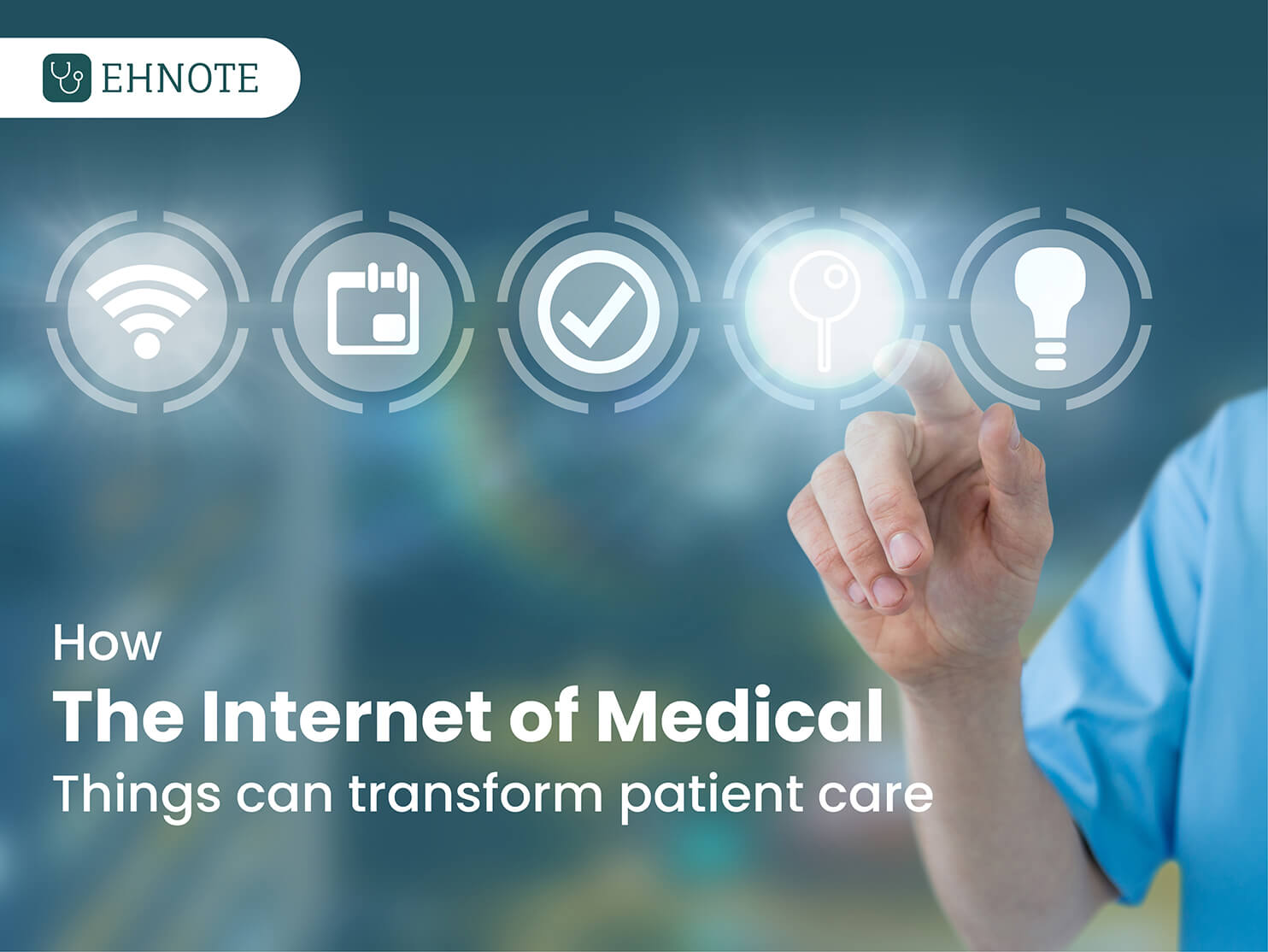How the Internet of Medical Things can transform patient care

Internet of Medical Things or IoMT – Emergence & its relevance
The Internet of Medical Things also known as IoMT can be defined as the application of the Internet of Things or IoT (an infrastructure of connecting physical objects to the internet thereby creating a smart device that enables communication between other smart devices or people) for medical and health related purposes, data collection and analysis for research and monitoring.
The IoMT in a sense includes a wide array of applications, wearable, sensor based devices and spaces creating a digitized healthcare system by connecting the available medical resources and healthcare services. IoMT is the connected technology that has specific features for eHealth and medical technology.
The IoMT market value is predicted to reach $136.8 billion by 2021 with IoT itself projected to reach $7.1 trillion by 2020. As global IoT grows so does the Internet of Medical Things with this technology being used by individuals to track their health such as FitBit which is revolutionizing the healthcare industry. The hospitals and clinical staff are using IoMT technology to communicate with patients about appointments, medication, lab results, care plans and much more.
Clinical applications of IoMT: Transforming the patient care and experience
IoMT technologies cover a wide range of clinical uses beginning with Smart watches and MedicAlert bracelets that detects falls and call emergency medical services to implantable pulmonary artery catheter connected to external devices such as mobile phones that notifies the doctor when pressure increases.
The IoMT is also expected to improve physician’s bottom line as per the data published in 2017 by the American Journal of Preventive Medicine – 86% of healthcare expenditures are incurred on people with chronic conditions such as cardiovascular diseases, diabetes, obesity and dementia.
IoMT technologies result in improving patient engagement. The Digital Health Survey carried out by Accenture in the 2019 survey found that 53% of patients are more likely to choose a primary care provider who uses remote or telemonitoring devices to monitor and record their health indicators and the percentage is up from 39% in 2016 especially in younger patients. A wide range of positive transformations through IoMT is becoming a reality for different user groups. The benefits of IoMT that is making or can make the healthcare experiences remarkable includes –
- Wearable technology is enabling real-time patient health track both in hospital and remotely.
- IoMT applications for consumer flow management such as patient admission and discharge are poised to improve the performance of hospitals, cut down on waiting lines and doctor over time.
- Another important benefit of IoMT and medical software solutions such as EHNOTE is saved cost and enhanced efficiency. Connected technology enables automation, helps staff in being productive and cuts down on labor costs.
- IoMT is transforming the future of healthcare in the form of pills with tracking capabilities, connected beds, wearable sensors, hospital rooms, emergency vehicles etc.
IoMT is already improving care plans, outcomes and readmission rates in developed economies like the United States of America and is poised to change the global healthcare sector with an ultimate goal to make quality healthcare accessible to everyone.